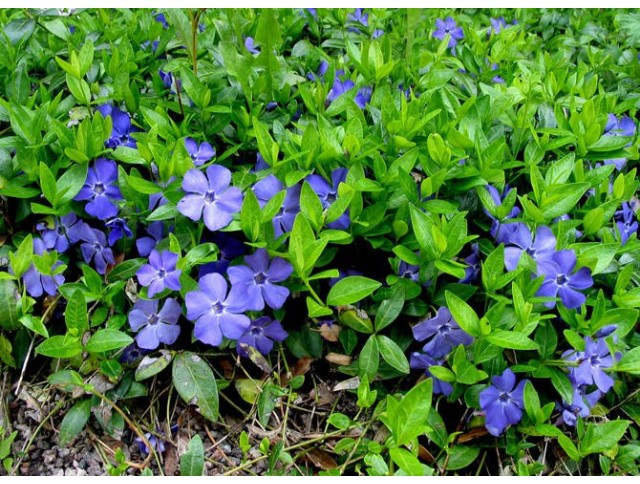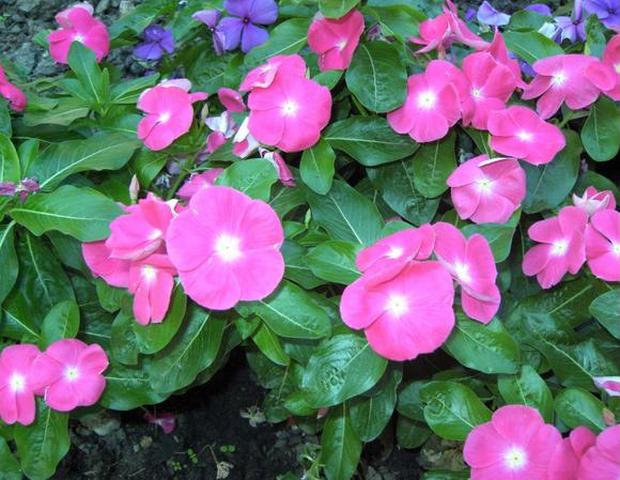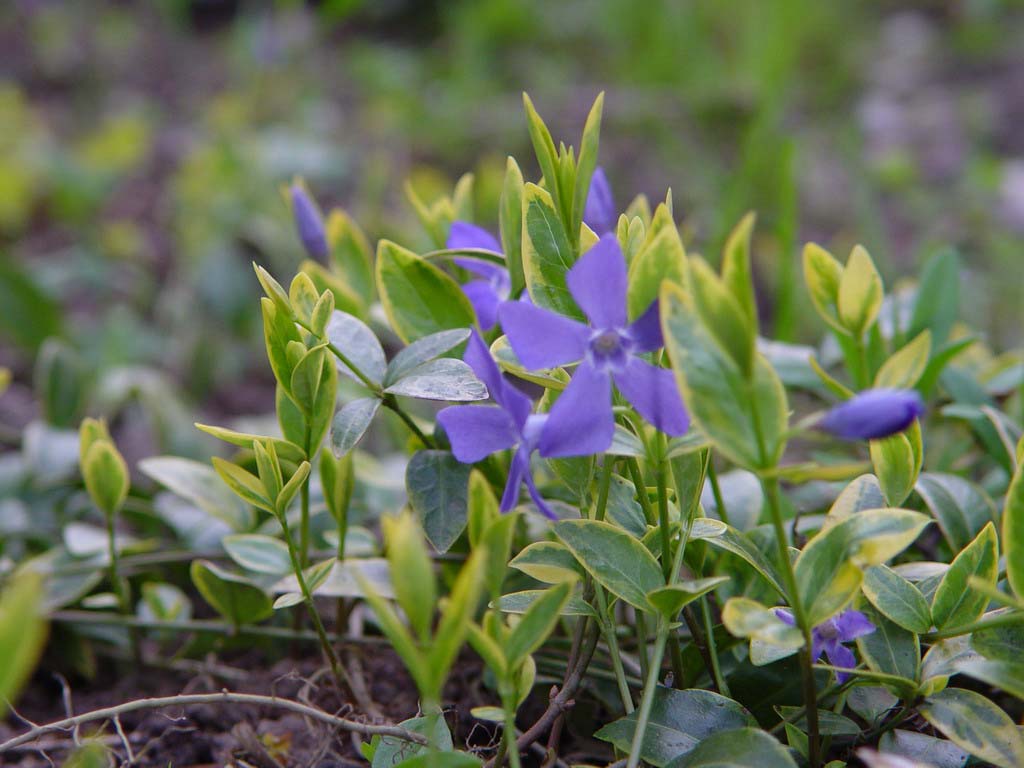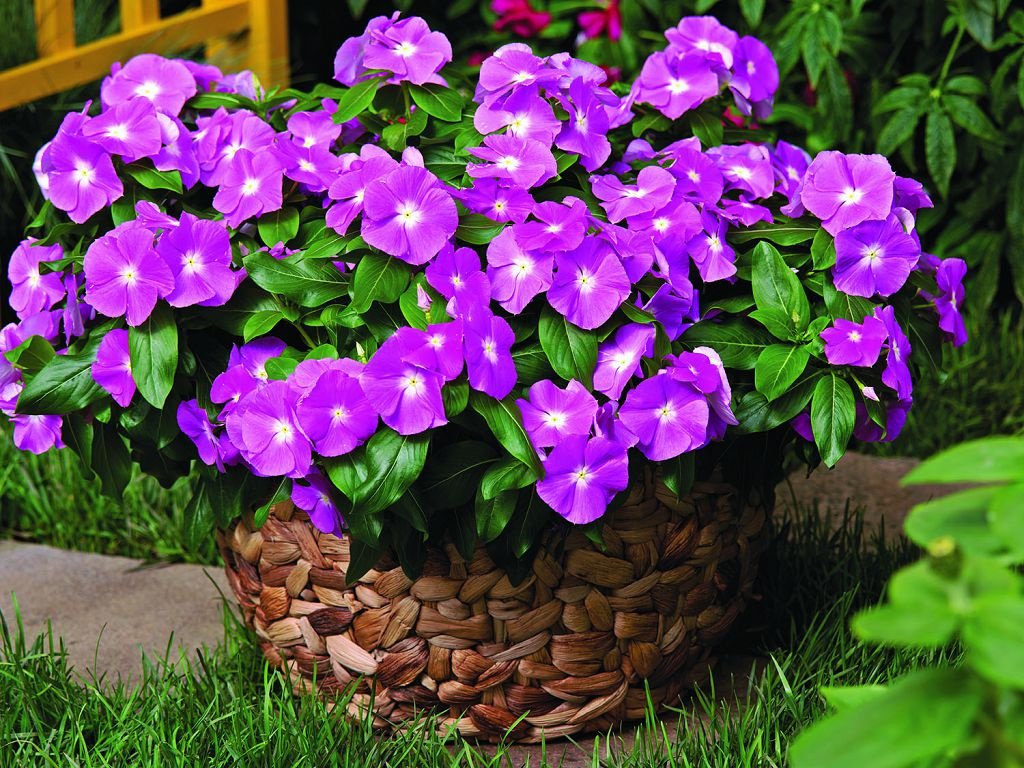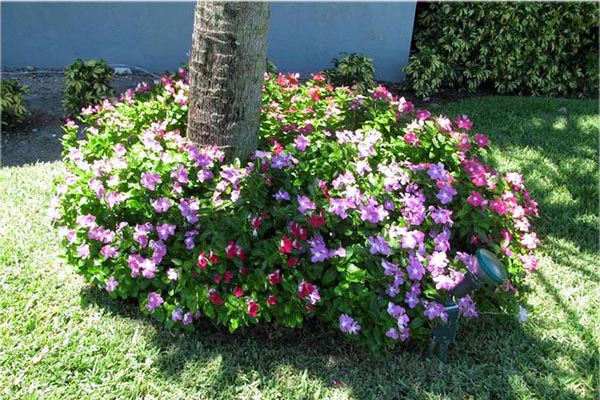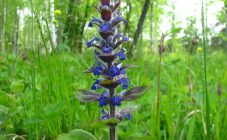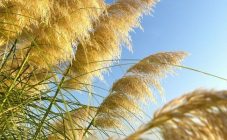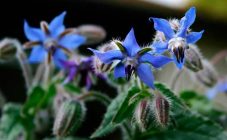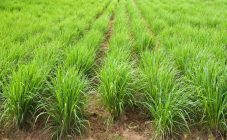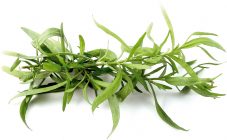Content:
With the onset of spring on the glades, steppe slopes and forest edges against the background of a dark green carpet, flowers bloom like the sky. They appear on long periwinkle shoots. As a medicine, it finds application in pharmaceuticals and traditional medicine recipes.
Description of periwinkle herb
Herb periwinkle has creeping stems and leaves that grow on the soil surface. The culture is hardy, easily tolerates heat and frost. Juicy shoots look the same at any time of the year: in winter, leathery leaves turn green even from under the snow. This feature makes the culture attractive in terms of decorativeness and use in landscape design.
The herb of the plant consists of two types of stems: short flowering, from 10 to 60 cm in height, and long (from 1 to 1.5 m). Lilac, blue, red, white and pink flowers, 2-3 cm in diameter, form from April to September. They are not formed on creeping shoots.
On the rooting stems there are dense glossy leaves covered with a leathery shell. They are not pubescent, have a rounded-elongated shape. The color of the upper part of the leaf is dark green and differs from the lower one, which has a grayish tint.
Useful properties of periwinkle
Preparations based on plant extract have antimicrobial and astringent effect. Perennial leaf plates contain more than 60 types of alkaloids. Their use inhibits the growth and division of cancer cells. Tinctures and herbal decoctions help in the treatment of:
- female diseases and infertility;
- prostatitis and prostate adenoma;
- toothache;
- deficiency in the body of ascorbic acid;
- digestive disruptions;
- diarrhea, dysentery;
- emphysema of the lungs and skin diseases.
But perennial is poisonous and if the dose is exceeded during treatment, it can provoke malfunctioning of the heart.
Planting methods
To obtain young bushes, you can use seeds and vegetative parts:
- It is easiest to plant with layering: without separating the stem, you need to sprinkle 2-3 internodes with soil. Soon they will turn into full-fledged bushes.
- It is also not difficult to increase the number of plants by stripping: having dug out a bush, you should divide the parts of the rhizome with leaves, then close the sprouts in a moist soil mixture.
- Cuttings cut off from the shoot with two internodes, which are simply stuck into the ground. After a while, two root systems are formed.
Periwinkle pink herbaceous plants for open ground (exactly as for growing in the room and on the balcony) can be obtained from seeds. It is better to sow them in boxes from January to February, ensuring the optimal temperature is not lower than + 23 ° C. After growing and picking, the seedlings are transferred to flowerpots or to a plot. But flower growers rarely use this option because of its laboriousness.
Step-by-step instruction
You can plant a perennial in early spring, after the snow melts, or in September. Periwinkle grass is not demanding for planting and care.
But for normal development and an attractive appearance, you should:
- Choose the right landing site.Culture will grow everywhere: on slopes, against walls, in direct sunlight and in the shade. The best option is partial shade or a place in the garden between trees.
- Find the right soil. Any soil with a neutral reaction is suitable for a semi-shrub. But it will become more luxurious and extend the flowering period on loose fertile loams with the addition of land from deciduous forest.
- Do not place the crop in a place where groundwater is close.
- Place drainage on the bottom of the groove made for planting. For this, pieces of brick, gravel or foam will fit.
- Lower the planting material into a drained hole, after adding manure, compost or a sod and leafy soil to it. The nutrients of the mixture allow you to do without fertilization for the next 2 years.
- Water and, slightly compacting, level the soil, then mulch.
If it is necessary to plant several bushes, then the indents between them should be equal to 30-35 cm.
Care and cultivation
Even novice growers can take care of a bush. It consists in moisturizing, feeding, measures to preserve moisture.
Watering
Although the herbaceous periwinkle tolerates dry periods without problems, it loves moisture more and grows with pleasure on damp soil. The first watering after planting is complete will be the most abundant. Subsequent ones are carried out, depending on the degree of drying of the growing environment.
Due to the close location of the roots to the soil surface, it is necessary to water not only the planting site, but also the entire growing area of the perennial. Plants on windowsills and balconies must be sprayed.
Top dressing
In addition to the organic matter introduced during planting, it is good to organize intermediate feeding. The frequency of their introduction is twice a year. In April, with the beginning of budding, phosphorus (for intensive flowering) and nitrogen (for the growth of shoots and leaves) fertilizers are added to the dressings. You can use a solution of chicken manure containing the full range of essential trace elements.
At the end of September, the plant needs nutrition based on potash fertilizers. They can be replaced with ash by scattering it over the soil. During the period of autumn precipitation, the periwinkle will absorb the nutrient solution, which contributes to a successful overwintering.
Pruning
Since the plant grows rapidly, it begins to interfere with the neighbors in the flower bed. You can stop its advance by cutting or pinching. Truncation of growth points promotes regrowth and development of lateral shoots. Thanks to this technique, the stem mat will become thicker and more beautiful. Withered, dried, broken and damaged branches and leaves must be removed.
Diseases and pests
Periwinkle is almost immune to disease. He is resistant to them. But often, due to waterlogging of the soil, it is affected by fungal infections, including powdery mildew. To get rid of it, over-watering should be avoided. To prevent the development of the fungus, spraying with a solution of Bordeaux liquid is used.
The culture is attacked by aphids and scale insects. They can be resisted by treatment with a detergent dissolved in water.
Periwinkle in the garden landscape
Gardeners appreciate it as a shade-tolerant ground cover plant and use it in the arrangement of flower beds, alpine slides, compositions with stones. Looks great next to primroses such as woodlands, crocuses and snowdrops, as well as primroses, forget-me-nots and hyacinths. Can be planted under rose hips or under rose bushes. Periwinkle greens will favorably emphasize their colorfulness.
From the climbing stems, original hedges are obtained, up to one and a half meters high. They grow quickly, decorate the yard and remain durable.Maintaining a green fence is easy: you need to water and prune on time.
A winning option is to plant a periwinkle, masking unkempt and unsightly areas of the yard or summer cottage. It will favorably decorate the garden space and become an attractive backyard decoration.
